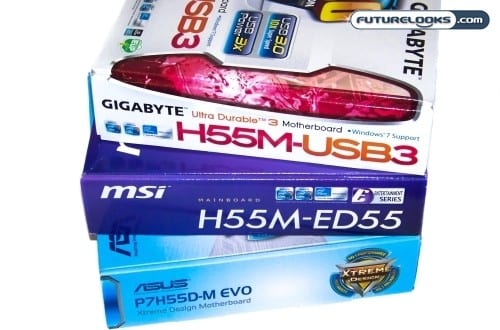Power Consumption
One thing micro-ATX platforms tend to need less of is power especially compared to previous generation platforms with GPUs built into the chipsets. The H55 is specifically aimed at supporting the Core i5 processors with the integrated graphics core which requires even less power. What we’re looking for here is standard integrated performance compared to using a descrete graphics card. Compare this to your standard ATX right now and the results will be clear.
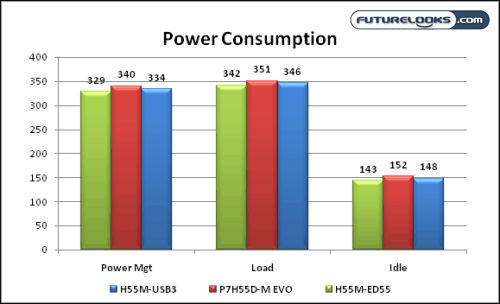
If it weren’t for the GTX 280 that we decided to run to push the boards further, power consumption would be much lower. In fact, without the video card, power consumption didn’t top 175 watts in our offline tests. If you want either of the platforms for an HTPC, they’ll more than suffice with or without discrete graphics. But, we see these micro-ATX boards as capable of a much, much more than watching TV without sending your local power plant in to over drive.
Game Benchmarks
Since we stated some of the obvious purposes of the motherboards which includes gaming, we have to include a couple quick titles. Crysis is still one of the top system-crawling games around. And, the game engine beneath BioHazard 5 is still very commonly played.
Crysis
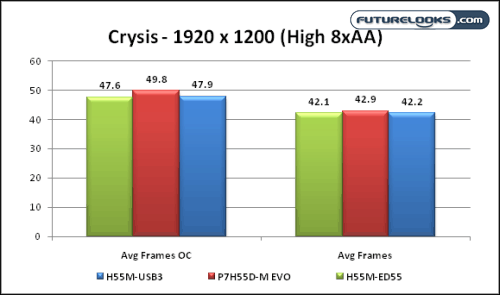
Being that Crysis can still beat down most any system, we used it to see if we have home theater PC performance or gamer performance. Well, we got gamer performance from each platform, but more so from the ASUS.
BioHazard 5
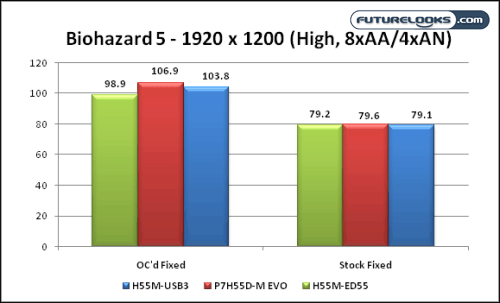
Here, we get a really good idea how these platforms run on a slightly older game engine. You can see that overclocking does have its benefits. This time around, we saw the MSI come in ahead of the GIGABYTE in the stock fixed test, but gets trounced once again in the overclocked tests. The pattern continues.
Input/Output Features Tested
Also, in recent testing, we’ve discovered that ASUS boards perform a little faster in USB 3.0 and SATA3 sequential read tests. That’s thanks to a PLX chip that helps data traffic move a little more efficiently across the Bus. We observed similar results here.
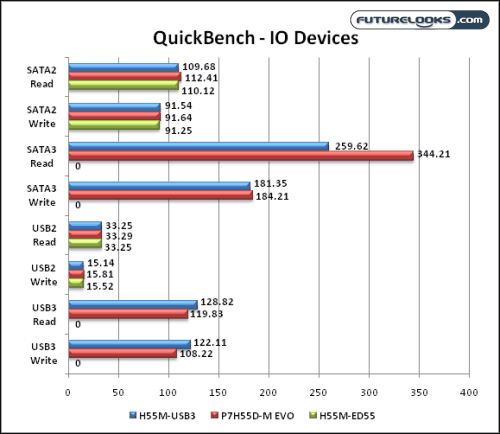
As you can see, the EVO board moves the most data at the top end probably in part to the Bus management. However, write sequential rates were very close to the USB3 board. Unfortunately, the ED55 doesn’t offer SATA3 (6Gb/s) or USB 3.0 which could be a questionable choice. It also further pushes it down the performance ladder as a distant third in overall performance.
RightMark Audio
If you paid attention to the platform specs and features, you undoubtedly noticed that all three boards use the same Realtek ALC889 Audio Codec. These are decent little audio processors as far as integrated codecs go.
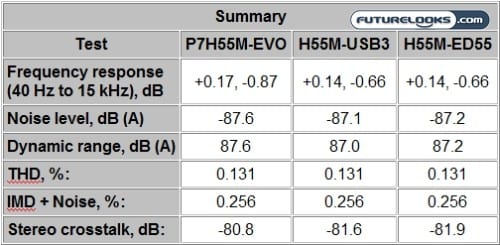
Ultimately, neither of the three offered better performance than the other. Audio clarity, loudness, and distortion were very close over all. Each utilized the same drivers without any fancy extras such as Creative emulation drivers. To the naked ear, this is pretty much a tie across the board.

